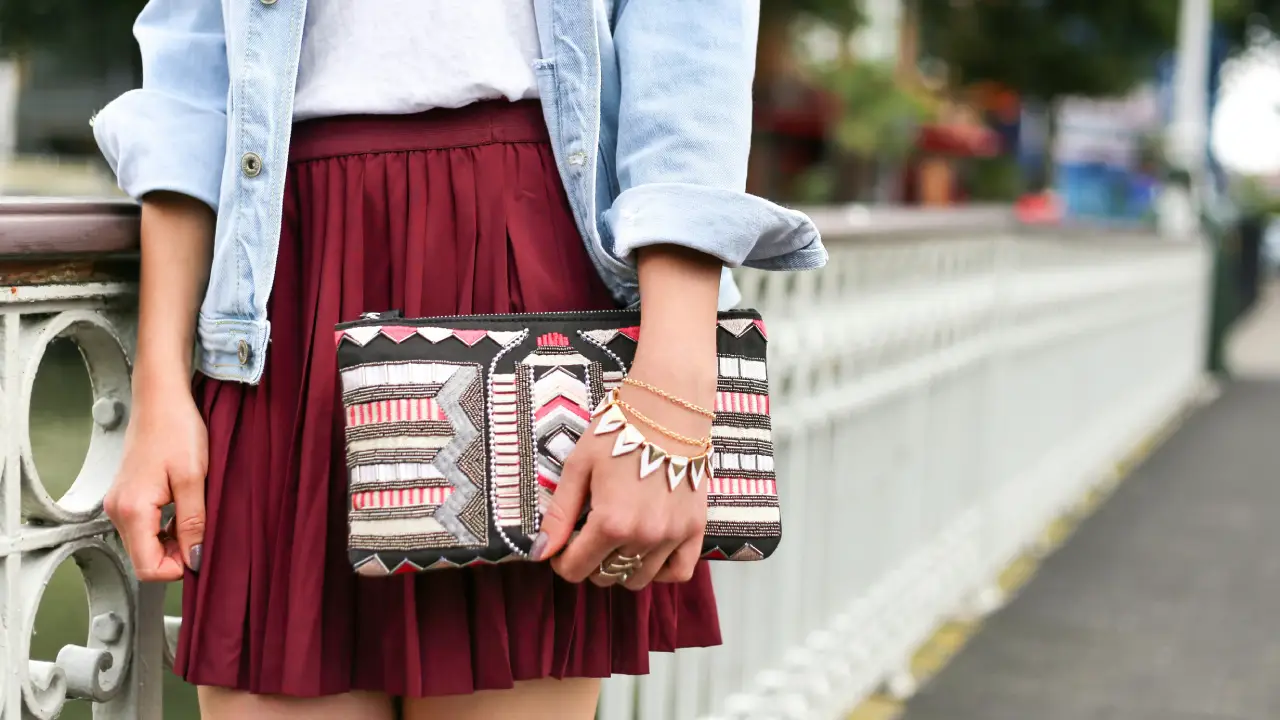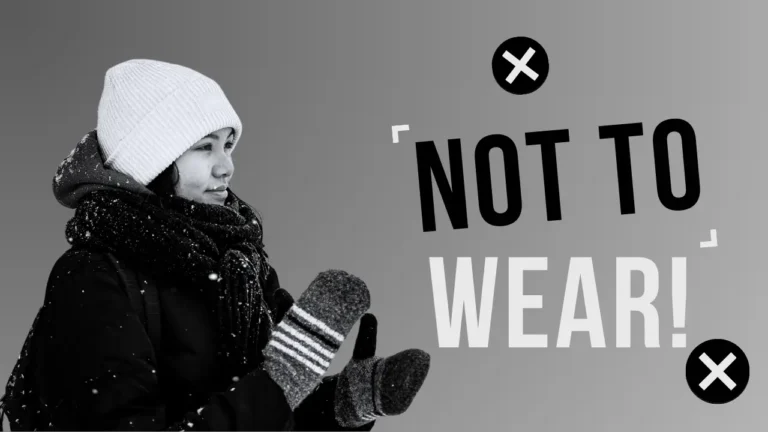In Scotland, you should avoid wearing heavy cotton fabrics, high heels, and overly formal attire. Scotland’s weather is known for being unpredictable, with frequent rain and windy conditions.
Wearing heavy cottons can leave you feeling cold and damp, while high heels may be impractical for walking on uneven cobblestone streets. Instead, focus on waterproof and wind-resistant materials, and opt for comfortable footwear that can handle the rugged terrain. Avoid overly formal clothing unless you’re attending a specific event, as the general dress code in Scotland tends to be casual and practical.
What Should Women Not Wear in Scotland?
In Scotland, women should avoid wearing high heels, thin-soled shoes, and light, non-waterproof outerwear. Scotland’s weather is often wet and windy, making high heels and thin-soled shoes impractical for walking on cobblestone streets or in rural areas.
Light, non-waterproof jackets or coats can leave you feeling cold and damp in the frequent rain. It’s also advisable to steer clear of overly revealing clothing, as the weather can be unpredictable, and layering is often necessary to stay comfortable. Opt for practical, weather-appropriate attire that can handle the varied Scottish climate.
What Should Men Not Wear in Scotland?
In Scotland, men should avoid wearing light, non-waterproof jackets, dress shoes with slick soles, and overly casual or sportswear outside of appropriate settings. Dress shoes with slick soles can be hazardous on wet cobblestone streets, leading to slips and falls.
Additionally, while casual wear is common, overly casual items like sportswear or shorts may not be suitable for many settings, especially in the cooler weather. It’s best to opt for practical, durable clothing that can handle Scotland’s variable climate.
What Not To Wear in Scotland in January?
In Scotland in January, you should avoid wearing lightweight clothing, non-waterproof shoes, and short sleeves. January is one of the coldest and wettest months in Scotland, with temperatures often hovering around freezing and frequent rain or snow.
Lightweight clothing won’t provide sufficient warmth, and non-waterproof shoes can leave your feet cold and wet in the damp conditions. Short sleeves are impractical for this time of year, as layering is essential to stay warm. Instead, focus on thermal layers, waterproof outerwear, and insulated footwear to keep comfortable in the chilly Scottish winter.
What Not To Wear in Scotland in February?
In Scotland in February, you should avoid wearing light jackets, non-insulated footwear, and thin scarves. February remains cold and wet, often with freezing temperatures and snow. Light jackets won’t offer enough warmth, and non-insulated footwear can lead to cold, uncomfortable feet in snowy or wet conditions.
Thin scarves won’t provide sufficient protection against the chilly winds. Instead, opt for heavy, waterproof outerwear, insulated boots, and thick wool scarves to keep warm and dry during this frigid month.
What Not To Wear in Scotland in March?
In Scotland in March, you should avoid wearing summer clothing, thin-soled shoes, and non-layerable outfits. March is a transitional month with unpredictable weather, often bringing a mix of cold, rain, and occasional mild days. Summer clothing is premature, and thin-soled shoes won’t protect your feet from the damp and cold.
Non-layerable outfits can make it difficult to adjust to temperature changes throughout the day. Choose versatile, layered clothing, waterproof shoes, and keep a warm jacket on hand to adapt to Scotland’s varying March weather.
What Not To Wear in Scotland in April?
In Scotland in April, you should avoid wearing flimsy rain gear, open-toed shoes, and overly heavy winter coats. April is known for its unpredictable showers, so flimsy rain gear won’t offer adequate protection, and open-toed shoes can quickly become uncomfortable in wet conditions.
While the temperatures are still cool, overly heavy winter coats may become too warm as the month progresses. Instead, opt for sturdy, waterproof outerwear, closed-toe shoes, and lighter layers that you can adjust depending on the weather.
What Not To Wear in Scotland in May?
In Scotland in May, you should avoid wearing heavy winter clothes, sandals, and non-waterproof items. May often brings milder weather, but heavy winter clothes can be too warm, making you uncomfortable as temperatures rise.
Sandals, while tempting, are not practical for Scotland’s wet conditions, and non-waterproof items can leave you soaked during sudden rain showers. Opt for lighter layers, closed-toe shoes, and a good waterproof jacket to handle the mix of mild temperatures and occasional rain.
What Not To Wear in Scotland in June?
In Scotland in June, you should avoid wearing overly warm clothing, high heels, and light fabrics that aren’t wind-resistant. June typically offers milder temperatures, so overly warm clothing can cause discomfort.
High heels are impractical for Scotland’s uneven terrain and cobblestone streets, and light fabrics that aren’t wind-resistant can leave you feeling chilly, especially along the coast. Choose comfortable, weather-appropriate layers, flat shoes, and wind-resistant materials to stay comfortable during Scotland’s early summer.
What Not To Wear in Scotland in July?
In Scotland in July, you should avoid wearing thick, heavy fabrics, overly revealing clothing, and non-breathable shoes. July is generally mild but can still be unpredictable, so thick fabrics may leave you overheated.
While it’s summer, overly revealing clothing can be impractical due to the cool breezes and occasional rain. Non-breathable shoes can also cause discomfort during any warmer days. Instead, opt for lightweight, breathable layers, modest clothing, and comfortable footwear that can handle Scotland’s variable summer weather.
What Not To Wear in Scotland in August?
In Scotland in August, you should avoid wearing dark, heavy clothing, sandals, and synthetic fabrics. August can be warm but still brings its share of rain, so dark, heavy clothing can make you uncomfortable in warmer weather and show water marks when wet.
Sandals may leave your feet exposed to the elements, and synthetic fabrics can trap sweat, making you feel sticky. Choose lighter, breathable fabrics, closed-toe shoes, and lighter colors that keep you cool while being prepared for the occasional shower.
What Not To Wear in Scotland in September?
In Scotland in September, you should avoid wearing summer clothes, thin jackets, and non-waterproof footwear. September can bring cooler temperatures and increased rainfall as autumn begins.
Summer clothes may leave you feeling cold, and thin jackets won’t provide adequate warmth or protection against rain. Non-waterproof footwear can also become uncomfortable in the damp conditions. Opt for transitional layers, waterproof outerwear, and sturdy shoes to stay comfortable as Scotland’s autumn weather sets in.
What Not To Wear in Scotland in October?
In Scotland in October, you should avoid wearing light outerwear, short sleeves, and shoes with poor grip. October brings cooler temperatures and frequent rain, so light outerwear won’t keep you warm enough.
Short sleeves can leave you chilly, and shoes with poor grip can be dangerous on wet or slippery surfaces. Choose warm, layered clothing, waterproof jackets, and footwear with good traction to navigate Scotland’s wet and chilly October weather safely.
What Not To Wear in Scotland in November?
In Scotland in November, you should avoid wearing non-insulated clothing, dress shoes, and thin gloves. November marks the beginning of winter, with colder temperatures and increased rainfall.
Non-insulated clothing won’t keep you warm, and dress shoes can be slippery and uncomfortable on wet surfaces. Thin gloves won’t provide enough warmth for your hands in the biting cold. Opt for insulated layers, waterproof and warm footwear, and thick, cozy gloves to stay comfortable as winter approaches.
What Not To Wear in Scotland in December?
In Scotland in December, you should avoid wearing light jackets, non-waterproof footwear, and single-layer outfits. December is one of the coldest and wettest months, with frequent rain and possibly snow. Light jackets won’t offer enough warmth, and non-waterproof footwear can leave your feet cold and wet. Single-layer outfits are not practical in the chilly conditions. Instead, focus on multiple layers, a heavy waterproof coat, and insulated boots to stay warm and dry during Scotland’s wintery December.
What Colors Not To Wear in Scotland?
In Scotland, it’s best to avoid wearing bright neon colors, solid black, and overly vibrant or flashy patterns. Here’s why:
- Bright Neon Colors: Scotland’s natural landscapes and weather often lean towards muted tones. Bright neon colors can clash with the environment and may not be well-suited for the cultural aesthetic. Additionally, neon colors can stand out too much in the subdued, misty, or overcast weather, making them less practical.
- Solid Black: While black is a versatile color, wearing solid black can sometimes be impractical in Scotland’s frequent rainy and windy weather. Black clothing tends to show water spots, dirt, and mud more easily. Moreover, in dim lighting or foggy conditions, wearing all black may make you less visible, which could be a safety concern, especially in rural areas.
- Overly Vibrant or Flashy Patterns: Scotland is known for its traditional tartans and muted color palettes. Overly vibrant or flashy patterns might seem out of place, particularly in rural or historical settings. If you want to blend in and respect the local culture, it’s better to opt for more subdued, earthy tones or classic patterns like tartan, which align more with the Scottish aesthetic.
FAQs On What Not To Wear in Scotland?
Yes, it’s advisable to avoid wearing bright neon colors in Scotland. These can clash with the natural landscape and may not be well-suited for the often subdued, misty weather. Opt for neutral, earthy tones or muted colors instead.
High heels are generally not practical for Scotland, especially if you plan to walk on cobblestone streets, hike, or explore rural areas. Instead, opt for comfortable, flat, or low-heeled shoes with good traction that can handle the varied terrain.
You don’t need to avoid wearing black entirely, but wearing all black can be impractical in Scotland’s frequent rain and overcast weather. Black clothing tends to show water spots and dirt more easily.
Yes, it’s generally best to avoid overly revealing clothing in Scotland due to the often cool and windy weather.




